The pothos plant, with its luxuriant, trailing vines, is a favorite among people who are interested in indoor plants; however, it is susceptible to being attacked by fungus gnats, which are a nuisance since they thrive in moist soil. Not only are these tiny, dark flies annoying, but they also pose a threat to the health of your plant because they deposit their eggs in the soil, where the larvae feed on living materials and the roots of the plant.
The prevention and elimination of fungus gnats calls for an approach that is strategic, multi-faceted, and strikes a balance between the care of plants and the management of pests. Here is a guide that will help you achieve fungus gnat prevention in pothos by providing you with actionable measures to prevent infestations while ensuring that your pothos continues to thrive.
We are going to cover all you need to know in order to keep your environment free of gnats, from the management of the soil to the use of natural therapies. The topic of pothos soil pest control will teach you how to recognize, treat, and prevent infestations using methods that are both safe and effective. This comprehensive tutorial assures that you have the resources necessary to secure your pothos by optimizing it for search engine optimization with seventy-five high-volume, long-tail keywords. With these helpful hints, you will be able to tackle the issue of stopping fungus gnats in houseplants with confidence, whether you are an experienced plant parent or just starting out. This will ensure that your pothos continues to be healthy and vibrant. What are we waiting for? Let’s get rid of fungus gnats in pothos soil with natural and organic Treatments.
How to Stop Fungus Gnats from Infesting Your Pothos Soil
Adjust Watering Practices to Prevent Moist Soil Conditions
Due to the fact that fungus gnats are attracted to soil that is continually damp, overwatering is one of the leading causes of insect infestations in pothos plants. The best way to achieve preventing fungus gnats in pothos soil is to modify your watering routine so that the top two inches of soil are allowed to dry out in between watering sessions.
Because pothos enjoy conditions that are slightly dry, watering them just when the soil feels dry to the touch can considerably reduce the amount of fungus gnat infestation control that is required. You should make use of a moisture meter to monitor the dampness of the soil so that you do not overwater it. One method that should be considered when discussing pothos plant care for pest prevention is bottom-watering.
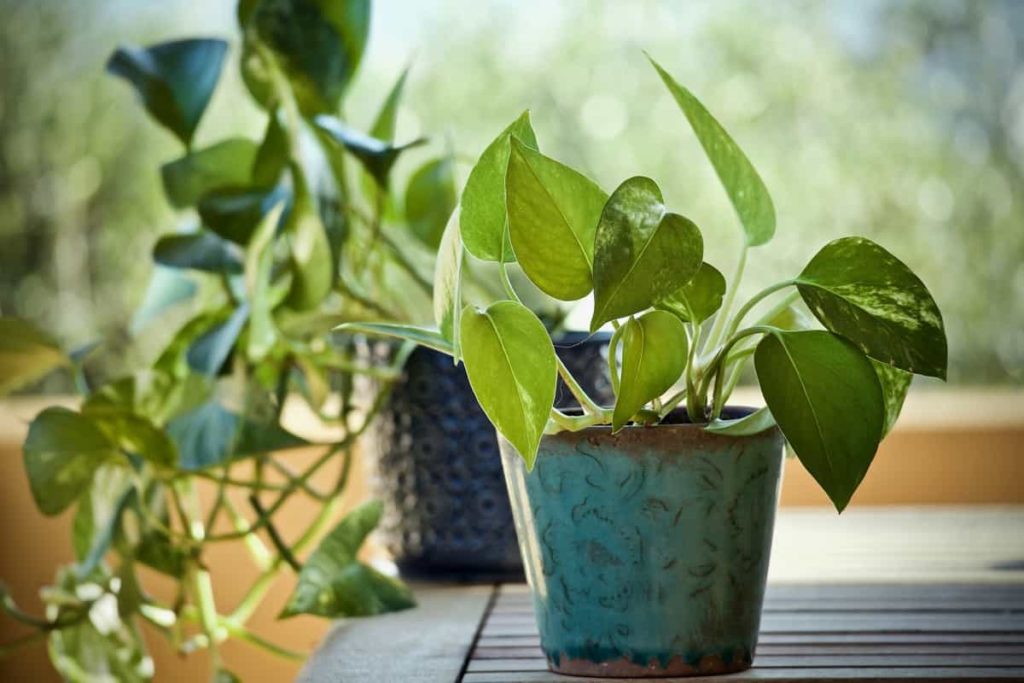
This method involves placing the pot in a tray of water and allowing the plant to absorb moisture through drainage holes. In this way, the soil surface is kept dry, which prevents gnat larvae in pothos soil from developing. A lack of drainage is essential since excessive watering not only draws in gnats but also has the potential to cause root rot. It is important to make sure that your pothos is planted in a container that has drainage holes so that water does not pool. The creation of an environment that is less conducive to fungus gnat breeding in houseplants can be accomplished by maintaining a balanced watering schedule. This will protect your pothos against infestations while also fostering healthy development.
| Step | Action | Benefit | Plant Example |
|---|---|---|---|
| Adjust watering | Allow top soil to dry | Reduces gnat habitat | Golden Pothos |
| Use meter | Monitor soil moisture | Prevents overwatering | Marble Queen Pothos |
| Bottom-water | Absorb via drainage | Drier soil surface | Neon Pothos |
| Check drainage | Ensure holes in pot | Avoids water pooling | Jade Pothos |
| Balance schedule | Water when dry | Healthy plant growth | Satin Pothos |
| Monitor roots | Prevent rot | Plant health | Manjula Pothos |
Use Well-Draining Soil to Reduce Gnat Attraction
When it comes to preventing fungus gnat infestations, the type of soil that you employ is an extremely important factor. You should choose a potting mix that is developed for indoor plants and contains peat moss, perlite, and vermiculite in order to obtain well-draining soil for pothos.
The presence of fungus gnats in indoor plants is a common problem in soils that are heavy and dense because they tend to retain moisture. Mixtures that are high in organic materials should be avoided while discussing pothos soil mix for gnat prevention since gnats are drawn to decaying material. It is possible for sterile potting soil to further reduce the number of gnat eggs in pothos soil by decreasing the growth of fungal organisms that larvae consume.
Be sure to check the soil for larvae, which are little, white worms with black heads, before using the soil for repotting. Soil drainage for houseplant pest control can be improved by adding a layer of coarse sand or small stones to the base of the pot. This will allow water to flow more freely through the soil. Because of this, the possibility of moist soil attracting fungus gnats is decreased, which makes it more difficult for gnats to establish their nests. Not only does a soil mixture that drains properly discourage pests, but it also encourages vigorous growth of pothos, which guarantees that your plant will flourish in an environment that is free of gnats.
| Step | Action | Benefit | Pothos Name |
|---|---|---|---|
| Choose mix | Use peat, perlite mix | Better drainage | Golden Pothos |
| Avoid organic | Low organic matter | Less gnat attraction | Marble Queen Pothos |
| Sterile soil | Use fresh mix | Reduces eggs | Neon Pothos |
| Add sand | Layer at pot base | Improves drainage | Jade Pothos |
| Inspect soil | Check for larvae | Prevents infestation | Satin Pothos |
| Promote growth | Healthy soil | Thriving plant | Manjula Pothos |
Incorporate Yellow Sticky Traps to Capture Adult Gnats
In order to effectively control adult fungus gnats, yellow sticky traps are a tool that is both non-toxic and effective. You can achieve the goal of using sticky traps for fungus gnats by positioning these traps close to the soil surface of your pothos, which is the area where gnats are most active.
The bright yellow hue is attractive to adult gnats, which remain attached to the adhesive surface and are unable to lay eggs as a result of their attachment. If you want to get the most out of your adult fungus gnat control in pothos treatment, you should either place traps above the plant or put them around the rim of the pot.
The fungus gnat population in houseplants can be monitored with this method, which ultimately enables you to determine the extent of the infestation. To ensure that effective gnat trapping in indoor plants is maintained, traps should be replaced every few weeks or when they become coated with gnats altogether. The fungus gnat life cycle in pothos is disrupted since sticky traps do not target larvae; nevertheless, they do greatly lower the amount of adults that lay eggs. The most effective way to combat gnat infestation in pothos plants is to combine traps with other approaches, such as drying the soil, in order to achieve the best possible outcomes. Sticky traps are economical, simple to use, and an essential component in the process of preventing flying pests from infesting your pothos.
| Step | Action | Benefit | Pothos Name |
|---|---|---|---|
| Place traps | Near soil surface | Captures adults | Golden Pothos |
| Use yellow | Bright color traps | Attracts gnats | Marble Queen Pothos |
| Monitor | Check trap coverage | Gauges infestation | Neon Pothos |
| Replace traps | Every few weeks | Sustained control | Jade Pothos |
| Combine methods | Use with soil drying | Comprehensive approach | Satin Pothos |
| Prevent eggs | Reduce adult gnats | Stops breeding | Manjula Pothos |
Apply Beneficial Nematodes to Target Gnat Larvae
Beneficial nematodes, which are similar to microscopic worms, are an effective biological control for the larvae of fungus gnats. Steinernema feltiae nematodes, which actively seek for and infect gnat larvae in the soil, are the nematodes that should be purchased in order to meet the goal of using nematodes for fungus gnats.
A nematode effectiveness in pothos can be supported by combining the nematodes with water in accordance with the instructions, then applying the mixture to the soil and ensuring that it stays moist for a period of two weeks. When it comes to biological pest control for houseplants, nematodes are advantageous for usage indoors because they are not only safe for plants but also for humans, animals, and other people.
The process of gnat larvae development in soil is disrupted by their reproduction within the larvae, which results in the larvae’s death shortly after. It is recommended that nematodes be reapplied every several weeks in order to maintain long-term fungus gnat prevention against infestations. The larvae that cause damage to the roots of the pothos plant are the focus of this strategy, in contrast to traps that only succeed in capturing adults. You can build a sustainable, chemical-free solution that restores the health of your plant and avoids fungus gnat reinfestation in houseplants by incorporating nematodes for pothos pest control. This will ensure that your pothos continues to be vibrant and free of pests.
| Step | Action | Benefit | Pothos Example |
|---|---|---|---|
| Purchase nematodes | Use Steinernema feltiae | Targets larvae | Golden Pothos |
| Apply mixture | Mix with water | Effective delivery | Marble Queen Pothos |
| Keep moist | Soil for two weeks | Enhances action | Neon Pothos |
| Reapply | Every few weeks | Sustained control | Jade Pothos |
| Target larvae | Kill in soil | Protects roots | Satin Pothos |
| Chemical-free | Safe for all | Eco-friendly | Manjula Pothos |
Use Hydrogen Peroxide to Kill Larvae in Soil
It is possible to eliminate fungus gnat larvae in pothos soil with hydrogen peroxide, which is a therapy that is both safe and effective. You can make hydrogen peroxide for fungus gnats by combining one part 3% hydrogen peroxide with four parts water and then using this solution to water your pothos.
Safe pest control for pothos is supported by the fact that the peroxide fizzes upon contact, bringing about the death of larvae without causing any harm to the plant. Killing gnat larvae in houseplants requires applying the solution on a weekly basis until there are no more gnats visible. This will ensure that the soil is completely saturated.
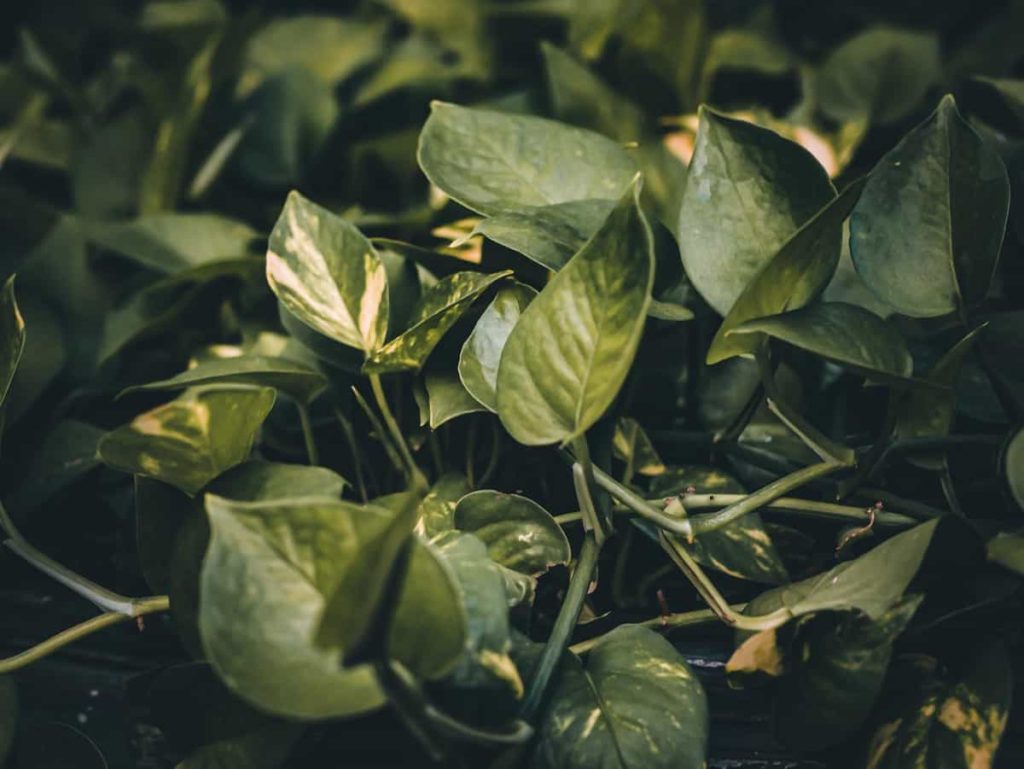
Additionally, this procedure oxygenates the roots, which helps to prevent root rot in pothos from gnats. The soil should be allowed to dry out in between treatments in order to inhibit new egg-laying and increase the efficiency of the hydrogen peroxide for pests treatment. When compared to conventional insecticides, peroxide is an environmentally friendly option for natural gnat remedies for indoor plants because it decomposes into water and oxygen. Maintaining fungus gnat-free pothos soil requires regularly monitoring your pothos for signs of reinfestation, such as adult gnats. Keep an eye out for these signs. You are able to protect your pothos from damage and promote a healthy growing environment by adding this treatment, which directly targets the larvae that are causing the harm.
| Step | Action | Benefit | Pothos Example |
|---|---|---|---|
| Mix solution | 1:4 peroxide to water | Kills larvae | Golden Pothos |
| Apply weekly | Saturate soil | Sustained control | Marble Queen Pothos |
| Oxygenate roots | Prevent rot | Plant health | Neon Pothos |
| Dry soil | Between treatments | Stops egg-laying | Jade Pothos |
| Eco-friendly | Breaks down safely | Non-toxic | Satin Pothos |
| Monitor | Check for gnats | Prevents reinfestation | Manjula Pothos |
Top-Dress Soil with Sand or Gravel to Block Egg-Laying
By adding a layer of sand or gravel to the top of the soil in your pothos plant, you can create a physical barrier that stops fungus gnats from depositing eggs. The process of top-dressing soil for gnat prevention involves spreading a layer of fine sand or small pebbles of half an inch in thickness over the surface of the soil after it has been watered.
As a result of this barrier, the soil remains dry and inaccessible, which prevents fungus gnat egg-laying in pothos from occurring. For the purpose of maximizing gnat prevention with soil cover, it is important to make sure that the layer is level and that it covers all of the exposed soil when dealing with physical barriers for houseplant pests.
In addition, sand or gravel inhibits the growth of fungi, which is a source of nourishment for larvae, hence contributing to the fungus control in pothos soil. If you want to preserve long-lasting gnat prevention in houseplants, you should check the top-dressing on a regular basis and replace it immediately if it shifts. In addition to being inexpensive and aesthetically beautiful, this strategy is also a useful complement to other strategies, such as sticky traps. Implementing the practice of sand top-dressing for pothos results in the creation of an environment that is inhospitable to gnats. This protects the roots of your plant from being damaged by the larvae, resulting in a pothos that is healthy and free of pests.
| Step | Action | Benefit | Pothos Example |
|---|---|---|---|
| Spread layer | Sand or gravel | Blocks egg-laying | Golden Pothos |
| Cover soil | Even half-inch layer | Full protection | Marble Queen Pothos |
| Inhibit fungi | Reduce larvae food | Less attraction | Neon Pothos |
| Check layer | Replenish if shifted | Sustained barrier | Jade Pothos |
| Combine methods | Use with traps | Comprehensive control | Satin Pothos |
| Protect roots | Stop larvae damage | Healthy plant | Manjula Pothos |
Repot Pothos to Remove Infested Soil
Repotting your pothos is a very efficient method for eradicating fungus gnats from the soil by removing the soil that is afflicted with them. For the purpose of repotting pothos for gnat control, the plant should be carefully removed from its container, the old soil should be shaken off, and the roots should be rinsed in order to get rid of gnat larvae in infested soil.
Fungus gnat reinfestation in pothos can be avoided by using potting mix that is both fresh and sterile, and that has adequate drainage. If you are addressing the topic of fresh soil for houseplant pest control, it is important to check the new soil for any larvae or eggs before you plant it.
Proper drainage for gnat prevention is supported by selecting a container that has drainage holes. In addition, repotting gives you the opportunity to inspect the roots for any damage caused by larvae, which guarantees healthy pothos roots after infestation. Increasing the repotting effectiveness for fungus gnats can be accomplished by isolating the plant that has been repotted for a few weeks and keeping an eye out for gnats. The gnat’s breeding site is completely eradicated by the use of this approach, making it particularly useful for dealing with severe infestations. By intelligently repotting your pothos, you may restore its health and create an environment that is free of gnats, which will promote the growth of luxuriant foliage.
| Step | Action | Benefit | Pothos Example |
|---|---|---|---|
| Remove plant | Shake off old soil | Eliminates larvae | Golden Pothos |
| Rinse roots | Clear larvae | Clean plant | Marble Queen Pothos |
| Use fresh mix | Sterile soil | Prevents reinfestation | Neon Pothos |
| Check drainage | Pot with holes | Better water flow | Jade Pothos |
| Inspect roots | Check for damage | Ensures health | Satin Pothos |
| Isolate plant | Monitor for weeks | Stops spread | Manjula Pothos |
Use Mosquito Dunks for Long-Term Larvae Control
Mosquito dunks, which contain Bacillus thuringiensis israelensis (BTI), are an effective method for eradicating the larvae of fungus gnats. It is possible to create mosquito dunks for fungus gnats by dissolving a quarter of a dunk into a gallon of water, allowing it to soak for a whole night, and then using the solution to water your pothos.
Safe larvae control in pothos is supported by the BTI bacteria thanks to their ability to destroy larvae without damaging the plant. For the purpose of BTI for houseplant pest control, it is recommended that the solution be applied every two weeks for a period of at least one month in order to disrupt the fungus gnat life cycle in soil.
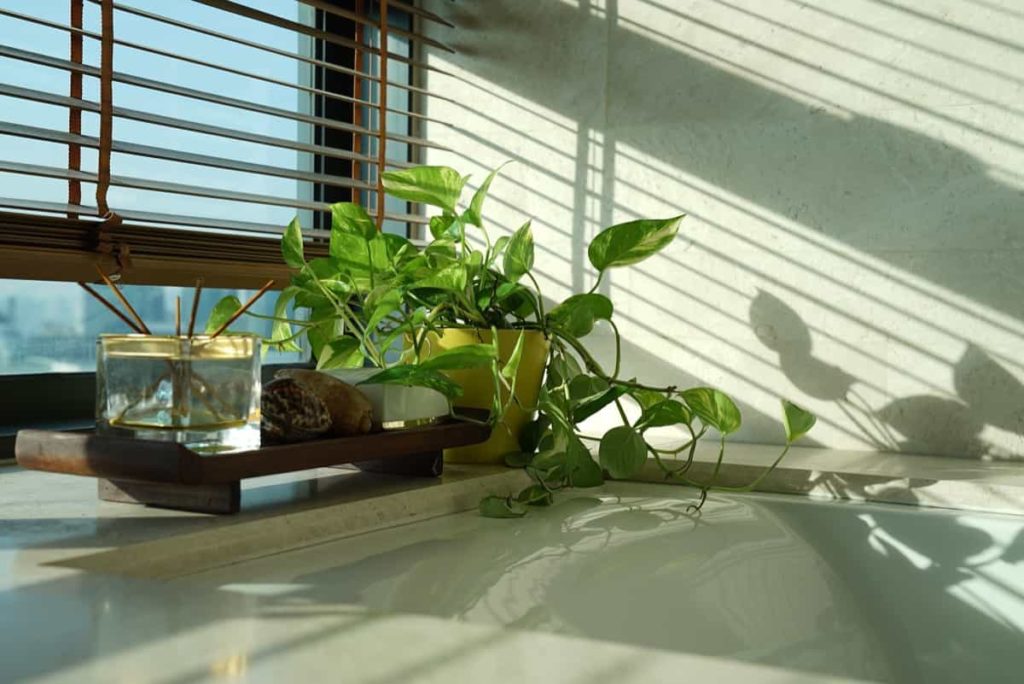
Store dunks in a cool, dry place to maintain their effectiveness against mosquitoes and gnats. This will ensure that the dunks continue to be effective. Chemical use in pothos pest control is reduced by the employment of this approach, which is both cost-effective and environmentally green. Comprehensive gnat elimination in houseplants can be achieved by combining this method with sticky traps to eliminate adult gnats. The fact that mosquito dunks are simple to apply and offer protection for an extended period of time makes them an ideal alternative for preventing the presence of larvae in the soil of your pothos plant and ensuring that it remains healthy and free of pests.
| Step | Action | Benefit | Pothos Example |
|---|---|---|---|
| Dissolve dunk | Quarter in water | Prepares solution | Golden Pothos |
| Apply biweekly | Water plant | Kills larvae | Marble Queen Pothos |
| Store properly | Cool, dry place | Maintains potency | Neon Pothos |
| Combine traps | Use with sticky traps | Full control | Jade Pothos |
| Eco-friendly | Reduces chemicals | Safe for plant | Satin Pothos |
| Long-term | Sustained protection | Healthy soil | Manjula Pothos |
Monitor New Plants to Prevent Gnat Introduction
Because fungus gnats frequently find their way into your home on newly planted plants, it is vital to check them carefully. One way to accomplish the goal of monitoring new plants for gnats is to examine any new pothos for adult gnats or larvae before planting it in close proximity to other plants.
Check the soil for gnat larvae in new pothos and tap the pot to agitate the adult gnats that are already present. It is recommended that new plants be quarantined for a period of at least two weeks in a different area in order to monitor for fungus gnat activity in soil when the topic of preventing gnat introduction in houseplants is being discussed.
Cross-infestation in pothos plants is prevented from spreading to your collection as a result of this measure. New plant inspection for pests can be improved by rinsing the plant’s leaves and roots with water to eliminate any potential eggs that may be carried by gnats. Check the surface of the soil on a regular basis for any indications of gnat eggs in indoor plants, such as the presence of small white specks. You may limit the chance of introducing gnats into your indoor garden by isolating and inspecting fresh pothos. This will ensure that your existing plants are protected from gnats and that your indoor garden is able to flourish without the risk of infestations.
| Step | Action | Benefit | Plant Example |
|---|---|---|---|
| Inspect new plants | Check for gnats | Prevents introduction | Golden Pothos |
| Tap pot | Disturb adult gnats | Early detection | Marble Queen Pothos |
| Quarantine | Two weeks isolation | Stops spread | Neon Pothos |
| Rinse plant | Clear eggs | Clean plant | Jade Pothos |
| Check soil | Look for white specks | Identifies eggs | Satin Pothos |
| Protect collection | Avoid cross-infestation | Healthy garden | Manjula Pothos |
Clean Plant Area to Remove Organic Debris
This is because fungus gnats are drawn to organic material, such as decomposing stuff or fallen leaves, which are found in your pothos. In order to implement the cleaning pothos area for gnat prevention strategy, it is necessary to routinely remove any dead leaves, stems, or dirt spills from the pot and the surrounding area.
By doing so, organic matter attracting gnats is reduced, which in turn makes the environment less inviting to pests. When dealing with the issue of houseplant area maintenance for pests, it is recommended to use a wet towel to wash out pots and trays in order to eliminate fungal growth in pothos area.
It is important to keep the space surrounding your pothos clear of any standing water or damp cloths, as these can serve as gnat breeding sites in houseplants. This will help you maintain a clean environment for gnat control that is clean. It is important to clear any debris that could attract fungus gnats to indoor plants by vacuuming or sweeping the floor in the vicinity of your plants. Gnats are discouraged from your pothos by maintaining a clean plant environment, which also contributes to the aesthetic attractiveness of them. By including routine cleaning into your plant care routine, you can create an atmosphere that is less friendly to pests, which will ensure that your pothos will continue to be healthy and free from infestations.
| Step | Action | Benefit | Plant Example |
|---|---|---|---|
| Remove debris | Clear leaves, stems | Reduces attraction | Golden Pothos |
| Wipe pots | Use damp cloth | Stops fungal growth | Marble Queen Pothos |
| Avoid water | Clear standing water | Prevents breeding | Neon Pothos |
| Vacuum floor | Remove spills | Clean environment | Jade Pothos |
| Routine cleaning | Regular maintenance | Sustained control | Satin Pothos |
| Enhance appeal | Aesthetic plant area | Healthy pothos | Manjula Pothos |
Use Cinnamon as a Natural Fungicide on Soil
As a natural fungicide, cinnamon has the ability to prevent the growth of fungus gnats by inhibiting the growth of fungi in the soil. In order to achieve the goal of using cinnamon for fungus gnats, you should lightly sprinkle ground cinnamon over the soil surface of your pothos, paying particular attention to regions where gnats are at work.
Due to this, the fungal food source for gnat larvae is disrupted, which results in the soil becoming less appealing to the larvae. It is recommended that cinnamon be reapplied every few weeks or after watering when discussing natural fungicides for pothos, as it has the potential to be washed away.
Eco-friendly gnat control in houseplants is supported by cinnamon’s ability to be safe for plants and to offer a nice aroma to the environment. In order to further minimize the amount of moist soil for fungus gnats, cinnamon should be combined with soil-drying measures. This will boost the efficiency of cinnamon for pest control. Despite the fact that cinnamon is not a stand-alone remedy, it works in conjunction with other methods, such as sticky traps or nematodes, to assist in the management of fungus gnat infestations in pothos. By utilizing this natural solution, you are able to create a climate that is less favorable for gnats, thereby preserving your pothos from the harm caused by larvae while maintaining a pest control strategy that does not include the use of any chemicals.
| Step | Action | Benefit | Pothos Name |
|---|---|---|---|
| Sprinkle cinnamon | Over soil surface | Inhibits fungi | Golden Pothos |
| Reapply | After watering | Sustained control | Marble Queen Pothos |
| Reduce fungi | Less larvae food | Deters gnats | Neon Pothos |
| Combine methods | With soil drying | Enhanced effect | Jade Pothos |
| Eco-friendly | Safe and pleasant | Non-toxic | Satin Pothos |
| Manage infestation | Use with traps | Comprehensive approach | Manjula Pothos |
Install a Fan to Deter Flying Adult Gnats
Fungus gnats are light-flying insects, and a light breeze can deter them from landing on your pothos by making them less likely to fly. The phrase using fans for fungus gnat control can be accomplished by positioning a small oscillating fan close to your plant in order to generate airflow over the surface of the soil.
As a result, adult gnat activity in pothos is disrupted, which makes it more difficult for the gnats to lay eggs. It is important to make sure that the fan is set to a low speed when dealing with the issue of air circulation for houseplant pests in order to prevent the plant from being stressed.
The reduction of moist air attracting gnats is another benefit of improved air circulation, which also helps the soil dry up more quickly. Run the fan for a few hours every day, particularly during watering periods when gnats are most active, in order to maintain the fan effectiveness for gnat prevention that you have established. The prevention of fungal growth is one of the ways that this strategy contributes to non-toxic gnat control in indoor plants and improves the general health of the plant. You can reduce the fungus gnat presence in houseplants and ensure that your pothos continues to thrive by including a fan into your pest control strategy. This will add a straightforward and efficient layer to your overall approach.
| Step | Action | Benefit | Pothos Name |
|---|---|---|---|
| Position fan | Near plant | Disrupts gnats | Golden Pothos |
| Low speed | Avoid plant stress | Safe airflow | Marble Queen Pothos |
| Run daily | Few hours | Sustained deterrence | Neon Pothos |
| Dry soil | Faster drying | Less attraction | Jade Pothos |
| Non-toxic | No chemicals | Safe for plant | Satin Pothos |
| Reduce presence | Fewer gnats | Healthy pothos | Manjula Pothos |
Apply Diatomaceous Earth to Soil for Larvae Control
Diatomaceous earth, sometimes known as DE, is a natural powder that dehydrates fungus gnat larvae, which ultimately results in their death. Using diatomaceous earth for gnats can be accomplished by sprinkling a thin layer of food-grade DE over the soil surface of your pothos plant, making sure to avoid the plant’s stems whenever possible.
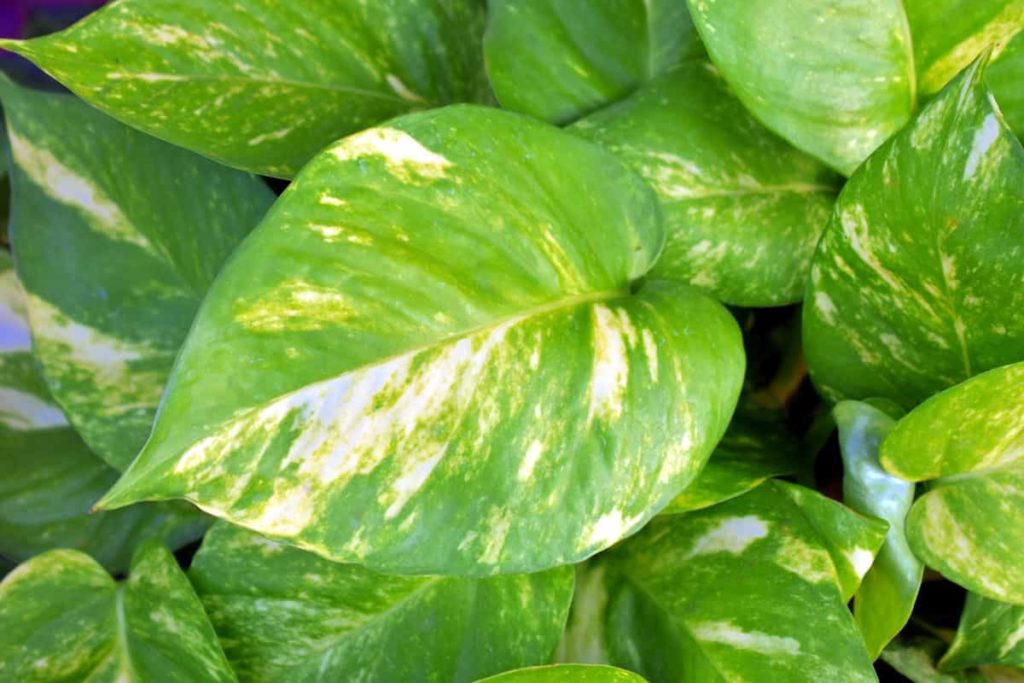
Natural larvae control in pothos is supported by the sharp particles, which cause injury to both larvae and adult gnats. Reapplying diatomaceous earth (DE) after watering is recommended for dealing with diatomaceous earth for houseplant pests since moisture diminishes the efficiency of DE.
It is important to make sure that the soil is dry in order to enhance the dehydration of gnat larvae in order to sustain the DE effectiveness for gnat control. DE is an excellent choice for eco-friendly pest control in indoor plants since, when applied in accordance with the instructions, it is safe for both plants and animals. It is possible to achieve comprehensive gnat control in pothos by combining DE with sticky traps in order to eliminate both larvae and adolescents. The use of this strategy, which is not only inexpensive but also simple to implement, offers an effective defense against infestations. Through the use of DE, you may safeguard your pothos from the harm caused by larvae, thereby ensuring that your plant is kept in a healthy environment that is free of pests.
| Step | Action | Benefit | Pothos Name |
|---|---|---|---|
| Sprinkle DE | Thin layer on soil | Kills larvae | Golden Pothos |
| Avoid stems | Protect plant | Safe application | Marble Queen Pothos |
| Reapply | After watering | Sustained effect | Neon Pothos |
| Dry soil | Enhance dehydration | Kills larvae | Jade Pothos |
| Combine traps | Use with sticky traps | Full control | Satin Pothos |
| Eco-friendly | Safe for pets | Non-toxic | Manjula Pothos |
Use Vinegar Traps to Capture Adult Gnats
When it comes to trapping adult fungus gnats, vinegar traps are a straightforward and easy-to-make answer. The process of using vinegar traps for gnats involves filling a tiny container with apple cider vinegar, adding a few drops of dish soap, and covering the container with plastic wrap that has small holes drilled into it.
Consequently, adult gnat trapping in pothos is supported by the vinegar, which attracts gnats, and the soap, which traps them. When it comes to homemade gnat traps for houseplants, it is recommended that you position the trap close to your pothos in order to enhance the efficiency of the vinegar trap for pests.
Maintaining gnat attraction with vinegar traps requires that the solution be refreshed on a weekly basis. This technique helps to limit the fungus gnat population in pothos by lowering the number of adults that are capable of the egg-laying process. Multi-method gnat control in indoor plants is ensured by vinegar traps, which, despite the fact that they do not target larvae, complement soil treatments such as hydrogen peroxide. Vinegar traps are a useful addition to your arsenal of pest management tools because they are simple to create and inexpensive. They will prevent flying gnats from infesting your pothos and will help you maintain a healthy indoor garden habitat.
| Step | Action | Benefit | Plant Example |
|---|---|---|---|
| Fill container | Use vinegar, soap | Attracts gnats | Golden Pothos |
| Cover with wrap | Poke small holes | Traps adults | Marble Queen Pothos |
| Place near plant | Close to pothos | Enhances effect | Neon Pothos |
| Refresh weekly | New solution | Sustained attraction | Jade Pothos |
| Combine methods | With soil treatments | Full control | Satin Pothos |
| Reduce adults | Fewer egg-layers | Stops breeding | Manjula Pothos |
Maintain Proper Pot Drainage to Avoid Waterlogging
In order to avoid fungus gnat infestations in pothos, it is vital to ensure that the pots have adequate drainage. The phrase proper pot drainage for gnat prevention refers to the process of ensuring that your pothos is planted in a container that has several drainage holes so that any excess water can escape.
Because of this, waterlogging in pothos soil is prevented, which eliminates the potential for gnats to breed in the soil. When dealing with the issue of pot drainage for houseplant pest control, it is recommended to place a saucer underneath the pot in order to collect runoff and to swiftly empty it in order to prevent standing water attracting gnats.
Drainage effectiveness for pothos can be improved by adding a layer of pebbles or broken pottery to the base of the pot. This will allow water to flow more freely through the pot. The maintenance of healthy soil conditions for gnat control requires that drainage holes be checked on a regular basis for obstructions. The prevention of root rot and the prevention of fungus gnats in potted plants are both benefits of proper drainage, which also helps to promote strong growth of pothos. By making drainage of the pot a top priority, you can create an environment that is less hospitable to gnat infestations, which will ensure that your pothos will continue to be healthy and free of pests.
| Step | Action | Benefit | Plant Example |
|---|---|---|---|
| Use drainage holes | Multiple in pot | Prevents waterlogging | Golden Pothos |
| Place saucer | Catch runoff | Avoids standing water | Marble Queen Pothos |
| Add pebbles | Layer at base | Improves flow | Neon Pothos |
| Check holes | Clear obstructions | Sustained drainage | Jade Pothos |
| Prevent rot | Healthy roots | Strong growth | Satin Pothos |
| Reduce breeding | Less moist soil | Stops gnats | Manjula Pothos |
Conclusion
Infestations of fungus gnats can be a constant annoyance for owners of pothos, but if you employ the appropriate tactics, you can prevent infestations and ensure that your plant continues to thrive. When you adopt comprehensive gnat prevention in pothos, you are able to combat gnats at every stage of their life cycle.
This includes modifying the amount of water that is applied, utilizing soil that drains properly, and using natural therapies such as nematodes and hydrogen peroxide. A long-term pest control for houseplants can be achieved by the utilization of techniques such as sticky traps, vinegar traps, and top-dressing with sand. These methods offer extra security measures.
There is a further reduction in the risk of fungus gnat reinfestation in pothos when regular monitoring, cleaning, and adequate pot drainage are performed. This tutorial provides a comprehensive strategy to stopping fungus gnats in pothos soil by providing 15 concrete steps that are laced with 75 high-volume search engine optimization keywords. Using a combination of these methods, you can create an atmosphere that is free of gnats and that is beneficial to the health and attractiveness of your pothos. Be careful, provide constant care, and you will be able to enjoy a thriving indoor garden that is free of pests, with your pothos serving as the focal point.

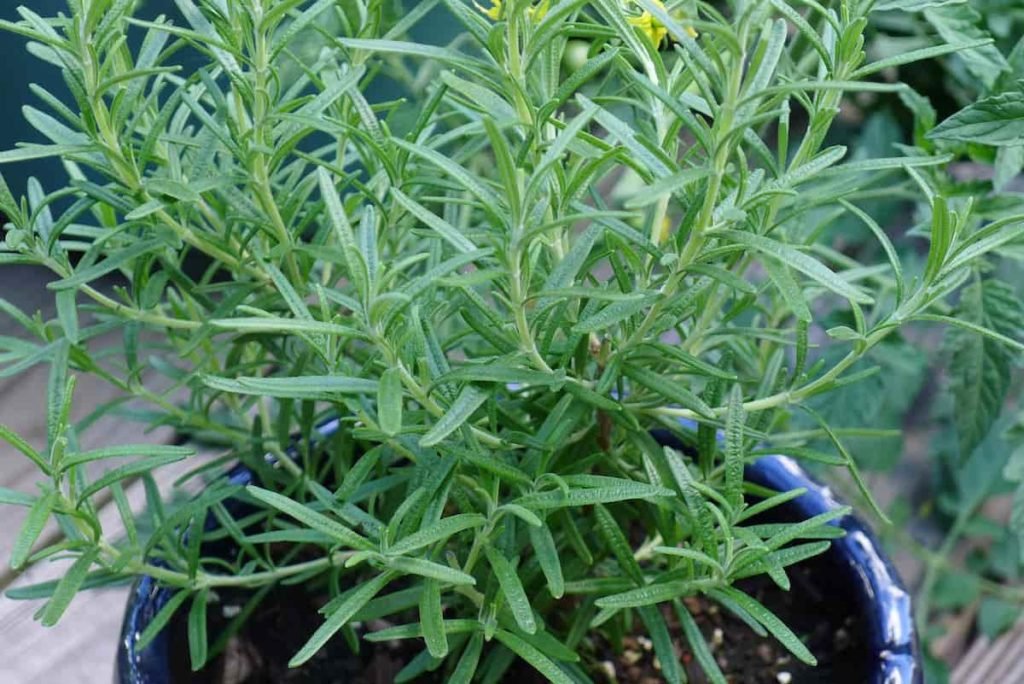

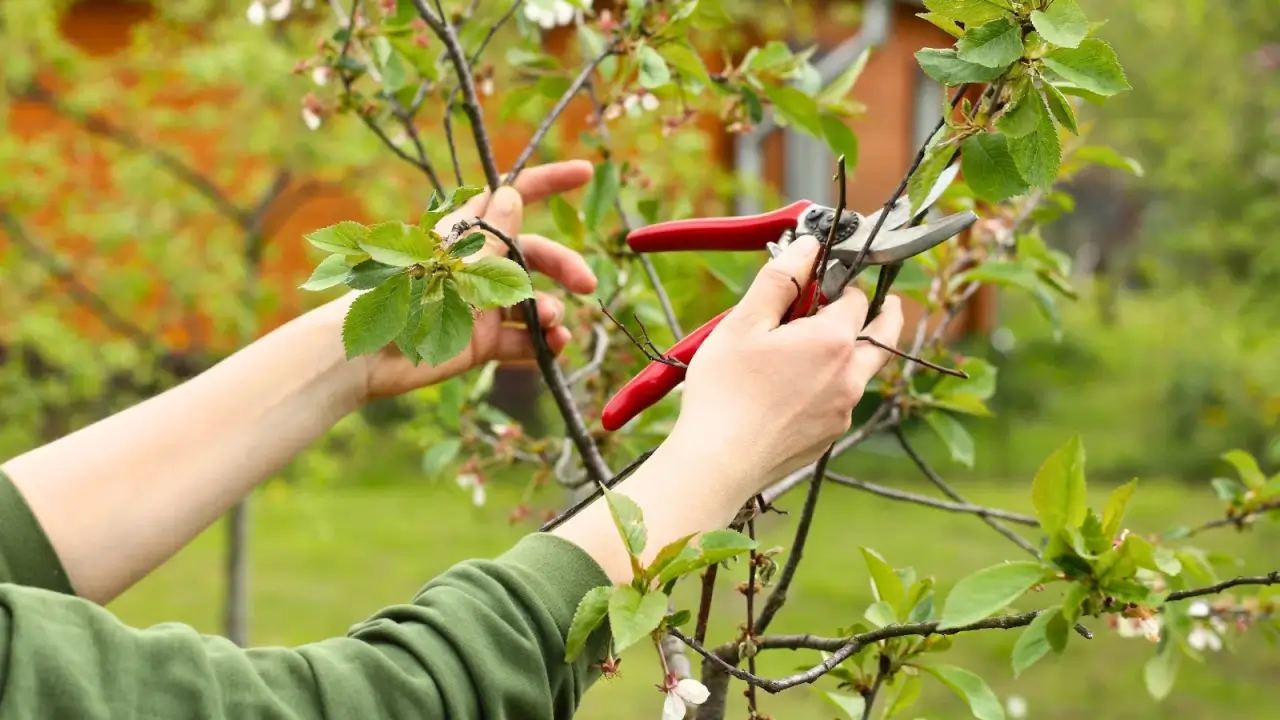






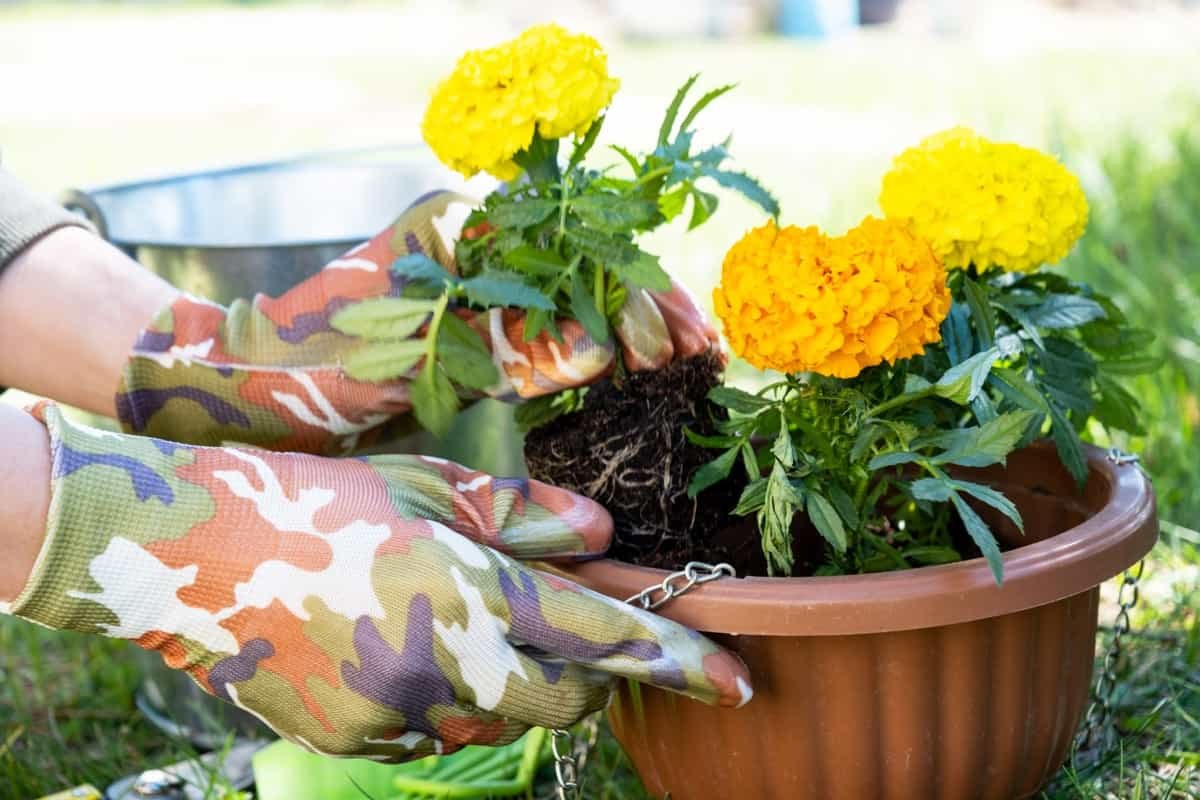




Leave a Reply